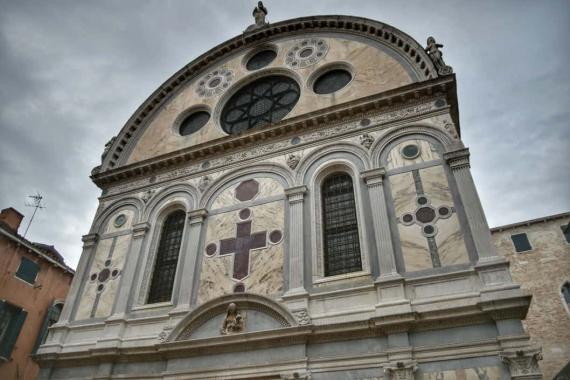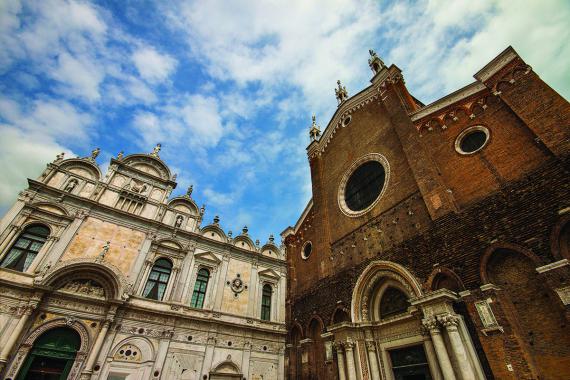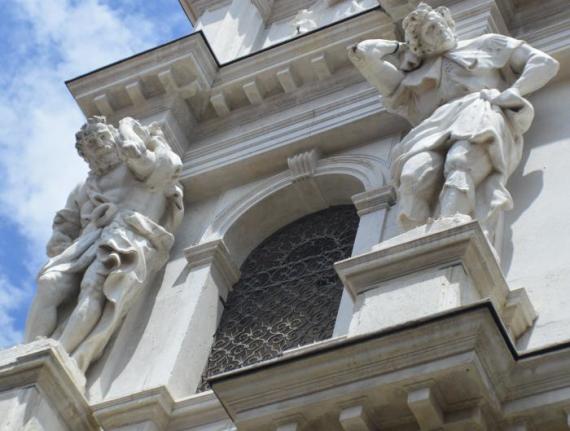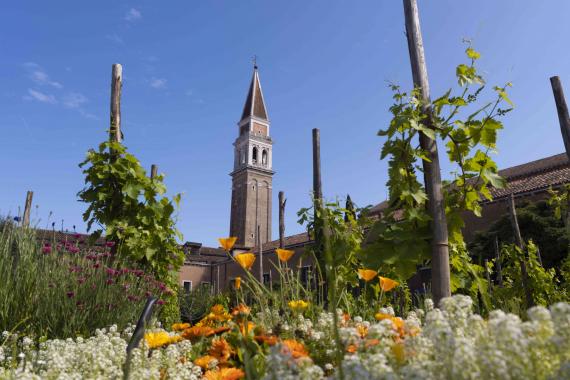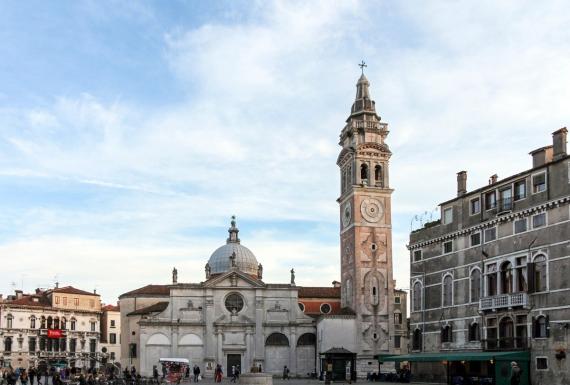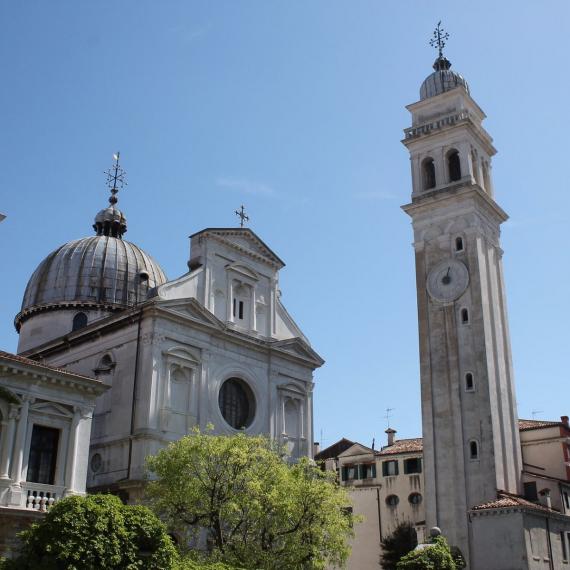In the little square of Miracoli, this small church rises solitary, covered by polychrome marbles both in its interior and exterior.
In Venice, there is an unspecified number of churches and bell towers that tell a piece of the city's history and art.
In this section, the most important churches of Venice are described, each with its own page containing historical, artistic, and cultural information.
You will also find advice and information on opening hours, prices, and contacts to facilitate your visit.
Extraordinary example of Venetian -Gothic style, the church was built by the Dominican from 1246 until 1430.
This church has always had an important role for the Serenissima since, from the 15th century it was where all the doges were buried. The funeral monuments of the doges and of famous people make the church of San Giovanni e Paolo the Pantheon of Venice history.
Built in 1575 by Andrea Palladio where once there was a hospital for poors, between SS. Giovanni e Paolo and S. Francesco della Vigna, this church enhanced during the 17th and 18th century with a creative façade, exquisite paintings thanks to the hospital’s benefactors.
This big Franciscan convent church of the 16th century was built under a projct of Jacopo Sansovino and it shows the balanced and harmonious architectural schemes of the late Renaissance period.
The elegant classical style façade is by Andrea Palladio (1564-70).
According to tradition, the church of Santa Maria Formosa was one of the eight founded in the 7th century by St. Magnus, after a Vision of the Virgin as a magnificent matron (indeed, in Latin, formosa means beautiful).
It was rebuilt in 1492 by Mauro Codussi with Tuscany first Renaissance’s style.
The Greek-Orthodox church of San Giorgio is known in Venice as San Giorgio dei Greci, since it is located in the area of Venice once housing the Greek community.

